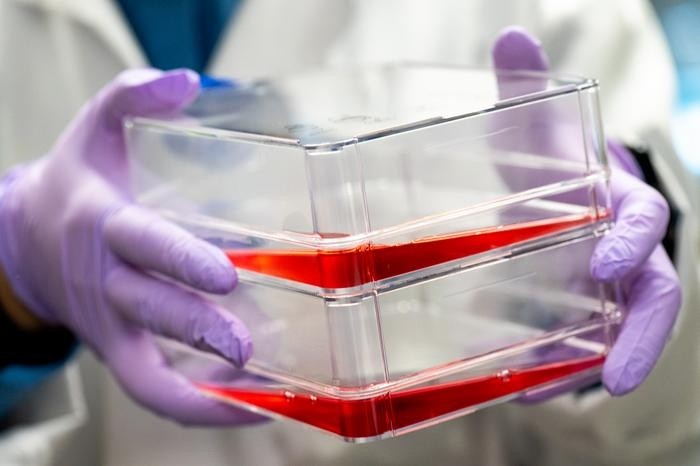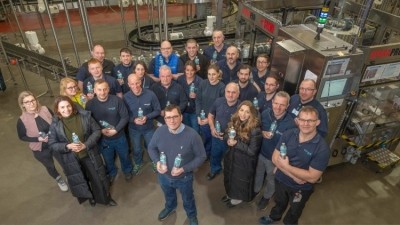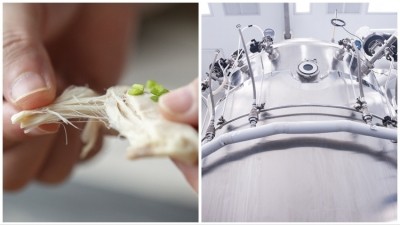News
New production method could cut the cost of cultivated meat

The team of researchers, led by Stern Family Professor of engineering David Kaplan, have created bovine (beef) muscle cells that produce their own growth factors, a step that can significantly cut costs of production.
Growth factors bind to receptors on the cell surface and provide a signal for cells to grow and differentiate into mature cells of different types. In this study published in the journal Cell Reports Sustainability, researchers modified stem cells to produce their own fibroblast growth factor (FGF) which triggers growth of skeletal muscle cells – the type typically found in a steak or hamburger.
David Stout – then lead researcher and now director of science at Tufts Cellular Agriculture Commercialization Lab – described FGFs as the instructions for cells to behave in a certain way.
Engineering cells
“What we did was engineer bovine muscle stem cells to produce these growth factors and turn on the signalling pathways themselves,” Stout explained.
Prior to this development, growth factors had to be added to the surrounding liquid and contributed to a majority of the cost of production for cultivated meat – up to or above 90%. What’s more, these growth actors don’t last long in the cell culture media, so they have to be replenished every few days.
“While we significantly cut the cost of media, there is still some optimisation that needs to be done to make it industry-ready,” said Stout. “We did see slower growth with the engineered cells, but I think we can overcome that.”
This would include strategies to change the level and timing of expression of FGF in the cell or altering other cell growth pathways. This way they won’t be adding foreign genes to the cell, just editing and expressing genes that are already there to see if they can improve growth of the muscle cells for meat production.
Simpler regulatory approval
That approach could also lead to simpler regulatory approval of the ‘ultimate food product’, since regulation is more stringent for addition of foreign genes vs editing of native genes, Stout claimed.
There is hope the strategy will also work with other forms of meat, such as chicken, pork or fish. However, there will be variability for the best growth factors to express in different species.
“Work is continuing at TUCCA and elsewhere to improve cultivated meat technology,” Kaplan added, “including exploring ways to reduce the cost of nutrients in the growth media, and improving the texture, taste, and nutritional content of the meat.
“Products have already been awarded regulatory approval for consumption in the US and globally, although costs and availability remain limiting. I think advances like this will bring us much closer to seeing affordable cultivated meat in our local supermarkets within the next few years.”
Meanwhile, Andrea Gutierrez-Solana, a food and sustainability policy expert and associate director at Whitehouse Communications, offers insights into what the EU Protein Strategy means for the future of plant-based and alternative proteins.
















